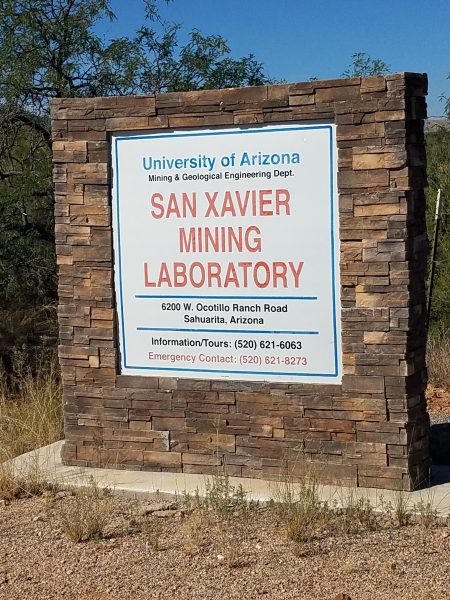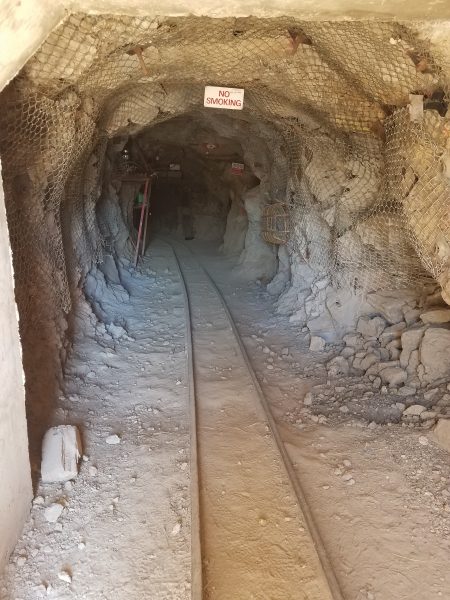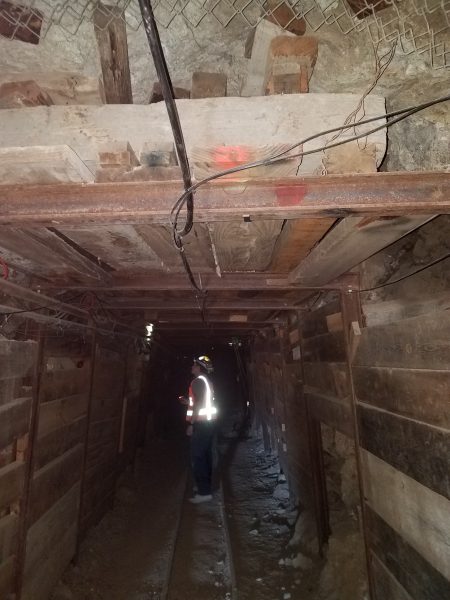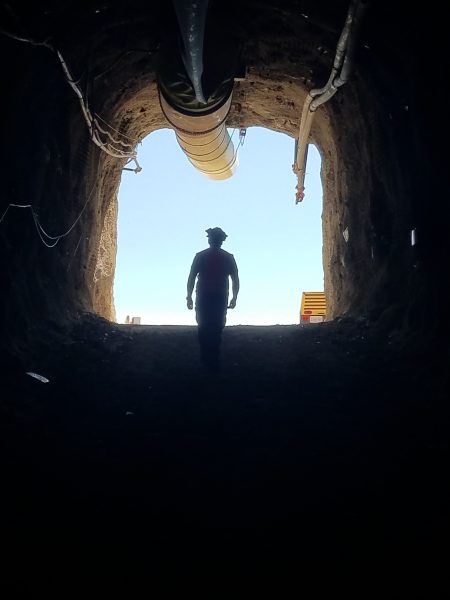Tanya Ence, El Inde Arizona

As the world’s demand for minerals increases, the University of Arizona is stepping up to solve mining challenges and improve sustainability.
The recently formed School of Mining and Mineral Resources, which falls under both the College of Engineering and the College of Science, is a collaborative endeavor that has something rather unique to offer.
And it’s not only its new minor in sustainable mineral resources.
“We are a truly interdisciplinary, even transdisciplinary school that brings together departments and disciplines from all across campus to deliver the curriculum and innovation for tomorrow’s mining, and to do that today,” explained Misael Cabrera, director of the School of Mining and Mineral Resources.
Cabrera’s vision for the mining school includes reengaging the mining workforce, reimagining mining education and reinvigorating mining research.
“The need for abundant minerals is absolutely urgent,” Cabrera said. “At the heart of it is that if we’re going to replace fossil fuels with electric energy, we are going to need a lot more minerals than we’ve ever needed in the past.”
Before moving to the school of mining, Cabrera was the director of the Arizona Department of Environmental Quality. He brings with him decades of expertise and “sweat equity” in environmental protection and clean-up, which will be critically needed in this new venture to help “fuel an abundant mineral supply that’s economically sustainable, socially sustainable, but also environmentally sustainable.”

As the world’s population grows and the standard of living increases, there is a greater demand for products and goods made from mineral resources, Cabrera said.
However, a move to green technology requires still more minerals. For example, it takes an estimated 2.5 times the copper to manufacture an electric vehicle than a combustion vehicle.
“The green energy transition is going to be a big driver for copper demand as well as some other minerals,” said Jodi Banta, program manager of the School of Mining and Mineral Resources.
The good news is that Arizona now produces almost three quarters of the nation’s copper and is the largest producer of non-fuel minerals in the nation.
In 2020, the Fraser Institute, a Canadian think tank well regarded in the mining industry, identified Arizona as number one in global mineral potential and ranked the state as having the most potential for continuing exploration and development in the world.
“It’s huge,” Banta said. “So obviously mining is going to be very important to the State of Arizona’s economic development, as well as that it’s going to drive a lot of jobs. There are already workforce shortages.”
The University of Arizona has long offered mining education. The College of Agriculture and the School of Mines were the first two academic units established at the university.
“The University of Arizona already offers all the majors that mining needs,” Banta explained. “We’ve had that mining engineering degree since 1895. There was no need to create a new major or a primary degree, but what’s missing is being able to introduce students to mining, because most students don’t know anything about it.”
According to Banta, 67% of UA students surveyed said they knew little to nothing about mining. Some introductory classes and the interdisciplinary undergraduate minor were designed to help students learn about mining and how to get involved.
Gabby Martin, 21, a junior majoring in geoscience, enrolled in the sustainable mineral resources minor in spring, during her sophomore year. She first heard about it at a meeting for the Society for Earth Science Students club, of which she’s a member.
“If you think of mining and obtaining minerals you think, oh, you’re literally destroying the earth,” Martin explained. “So, I thought it was really cool that somebody took the initiative to make this minor so that you could learn about a bunch of different areas and how sustainability fits into our changing world that’s needing more and more materials to function.”
Cabrera said it’s important to help students understand that “a mining career is not a hard hat and a pickax.”
“Someone who’s going to be a human resource professional, or who is interested in archeology, can get our minor and then have much better opportunities in the mining industry,” he said.
“Mines for Limitless Minds” Outdoor Career Fair
The University will host its interdisciplinary career fair for mining on Nov. 8, on the UA mall.
It will be an opportunity “to introduce students to what we call the limitless career opportunities that exist in this industry,” Banta said.
There will be more than a dozen mining companies, suppliers and consultancies showing students what careers are available.
“They’ll come and they’ll recruit for everything from industrial hygiene to accounting, to supply chain managers, certainly environmental engineers and scientists, computer engineers and scientists as well as all kinds of engineers for mining and chemical,” Banta said.
San Xavier Mining Laboratory

The UA is one of only four mining schools in the nation that has a mining laboratory where students can get hands-on experience that prepares them to hit the ground running after graduation.
“Geomechanics classes actually come out here and do geomechanics surveys, look at the ground whether it’s moving or not, plan new declines, plan new construction,” said James Werner, director of the UA’s San Xavier Mining Laboratory. “Most everything we do out here, we kick back on campus and get the classes involved.”
Between 1880 and 1952, the mine located at 6200 Ocotillo Ranch Road in Sahuarita produced silver, copper, zinc and lead. The university first began leasing the mine’s sixth shaft in 1958 and bought the mine in 1975.
The state has allocated $4 million in annual funding for the School of Mining and Mineral Resources and some of its initial funding was used to modernize the mine, adding a new decline. The 15-by-15-foot decline was begun in 2020 and phase one was completed in March 2021. The expansive decline allows access to modern mining equipment.
The unique site, which now incorporates two mining declines, has attracted outside projects and research critical to national defense, geosciences, mine safety and miner rescue.
Education as well as research and testing occur at the University’s SX Mine.




Tour the SX Mine
University of Arizona student tours are offered at least once a month. The next tours to the SX Mine are scheduled for October 28, November 4 and 18, and December 2.
Free transportation and food are provided.
The tours last about 1.5 to 2 hours and are conducted in a mixed indoor-outdoor environment.
For further information or to make a reservation, click here.
El Inde Arizona is a news service of the University of Arizona School of Journalism.
